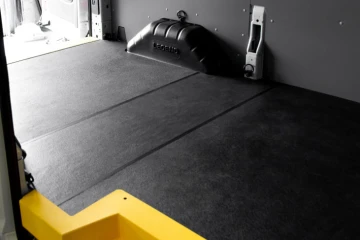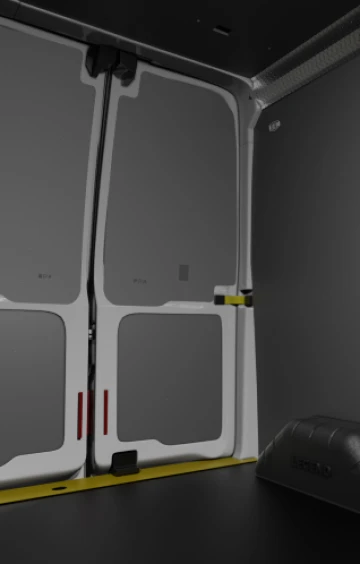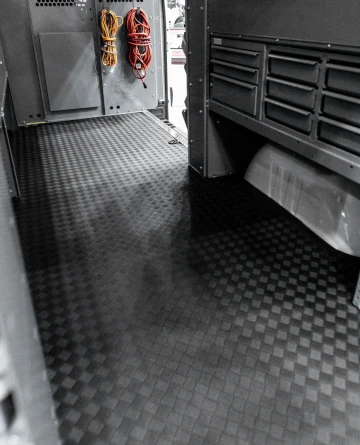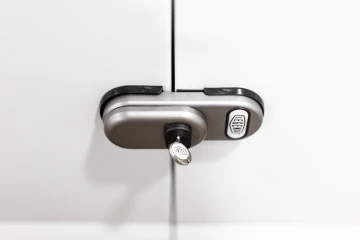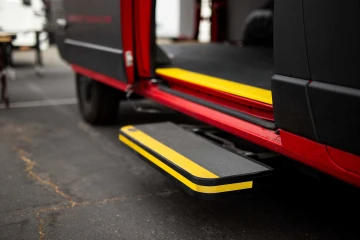17 Jul 24
Beat the Heat: What to know about Thermal Management for Fleets
In the relentless summer heat, the inside of a work van can become more than just uncomfortably warm—it can pose serious risks to both personnel and productivity. As temperatures rise, so do concerns about employee well-being, equipment performance, and overall operational efficiency. Effective thermal management isn't just a luxury; it's a necessity for fleet managers looking to safeguard their teams and investments.

 This guide explores the critical aspects of temperature control in work vans, offering insights into why it matters and how innovative solutions can mitigate these challenges effectively.
This guide explores the critical aspects of temperature control in work vans, offering insights into why it matters and how innovative solutions can mitigate these challenges effectively.
IS HEAT EVEN THAT BIG OF A PROBLEM?
Yes. It is.
Extreme heat is a silent but highly serious threat to fleet operations, affecting everything from employee safety to overall efficiency. According to the U.S. Department of Labor, working in temperatures over 77°F can lead to severe heat-related illnesses such as heat stroke, heat exhaustion, heat cramps, and heat rashes. These aren't just minor inconveniences—they're serious health risks that can result in occupational injuries.
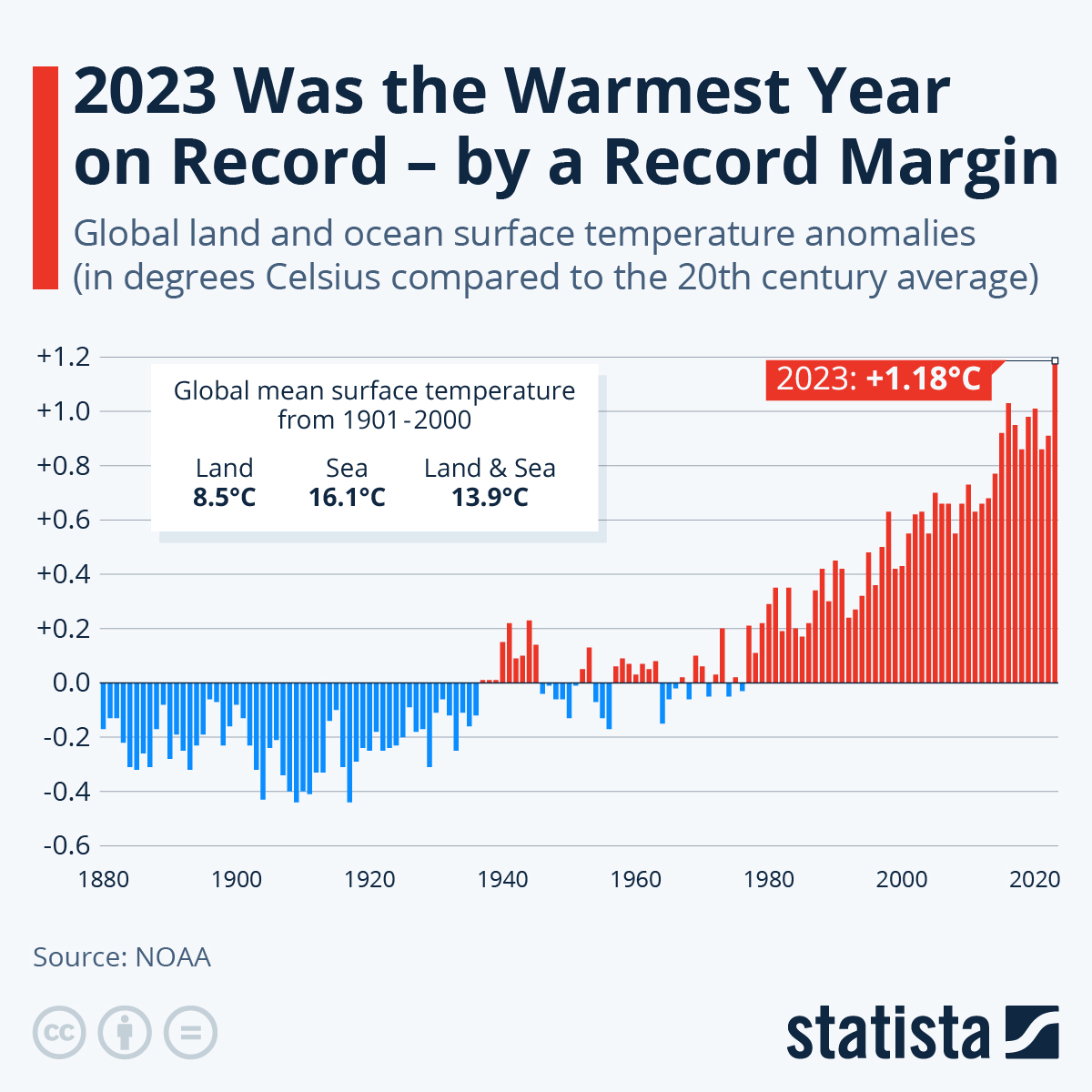
Consider this: during the summer, temperatures frequently soar past this 77°F threshold in at least ten states across the U.S., with some states averaging well over 80°F. In scorching hotspots like Arizona, daily temperatures can skyrocket above 100°F, and inside the confined space of a cargo van, these temperatures become amplified. This is the workspace your employees will be accessing throughout the day.
Besides health risks, the Centers for Disease Control and Prevention (CDC) have found that heat impairs cognitive function and reaction times, drastically decreasing productivity and morale. When drivers are exposed to high temperatures for extended periods, their ability to perform tasks safely and efficiently plummets.
Ignoring these threats isn't just careless—it’s a liability. Without proper temperature control, fleet managers leave themselves open to lawsuits, severe employee injuries, and, in extreme cases, fatalities.
WHAT WILL HEAT MITIGATION CHANGE FOR MY FLEET?
Heat mitigation can transform your fleet by ensuring a safer, more comfortable, and more efficient working environment. It’s an investment towards employee well-being, cargo protection, and operational efficiencies, which ultimately lead to more cost savings.
BOOSTED EMPLOYEE WELL-BEING, MORALE AND RETENTION
Investing in heat mitigation means investing in employees. Drivers recognize such investments and often use them to gauge how much their company values them. Like any other workplace, employee morale is boosted by better work equipment that makes their lives easier.
Motivated employees will always outperform fatigued and underserved employees, delivering far better results for the fleet.
 In addition to performance, quality-of-life upgrades also boost employee retention. Research from the National Institute for Occupational Safety and Health (NIOSH) shows that heat stress can lead to higher absenteeism and turnover rates, which is well explained by the harsh impacts of temperature on people's well-being. Hiring and retraining is significantly more expensive for fleets than retaining employees already familiar with the brand, culture and the work.
In addition to performance, quality-of-life upgrades also boost employee retention. Research from the National Institute for Occupational Safety and Health (NIOSH) shows that heat stress can lead to higher absenteeism and turnover rates, which is well explained by the harsh impacts of temperature on people's well-being. Hiring and retraining is significantly more expensive for fleets than retaining employees already familiar with the brand, culture and the work.
Thermal management systems directly address this pain point. Therefore, when the workplace is cool and comfortable, employees are less likely to quit, and fleets save more money.
TOOLS AND CARGO PROTECTION
Tools and materials stored in your vans are vulnerable to temperature extremes. Metal tools can become extremely hot or cold, making them difficult to handle.
Imagine plumbers who must get through a job with burning hot equipment, because their van has been vulnerable to the sun all day. It’s a very different experience from the employee who has an insulated van and can handle their tools as they normally would.
Similarly, cargo is susceptible to temperature changes. This was the case for British Gas, where temperature fluctuations were causing condensation to form on the van’s ceiling, damaging electric components within the van.
.jpg)
It was not until Legend designed a tailored insulation kit that they were able to resolve the problem entirely and save a lot of money. Comprehensive thermal management helps protect your investments by promoting stable temperatures, thereby prolonging the life and reliability of your tools and cargo.
BETTER OPERATIONAL EFFICIENCY
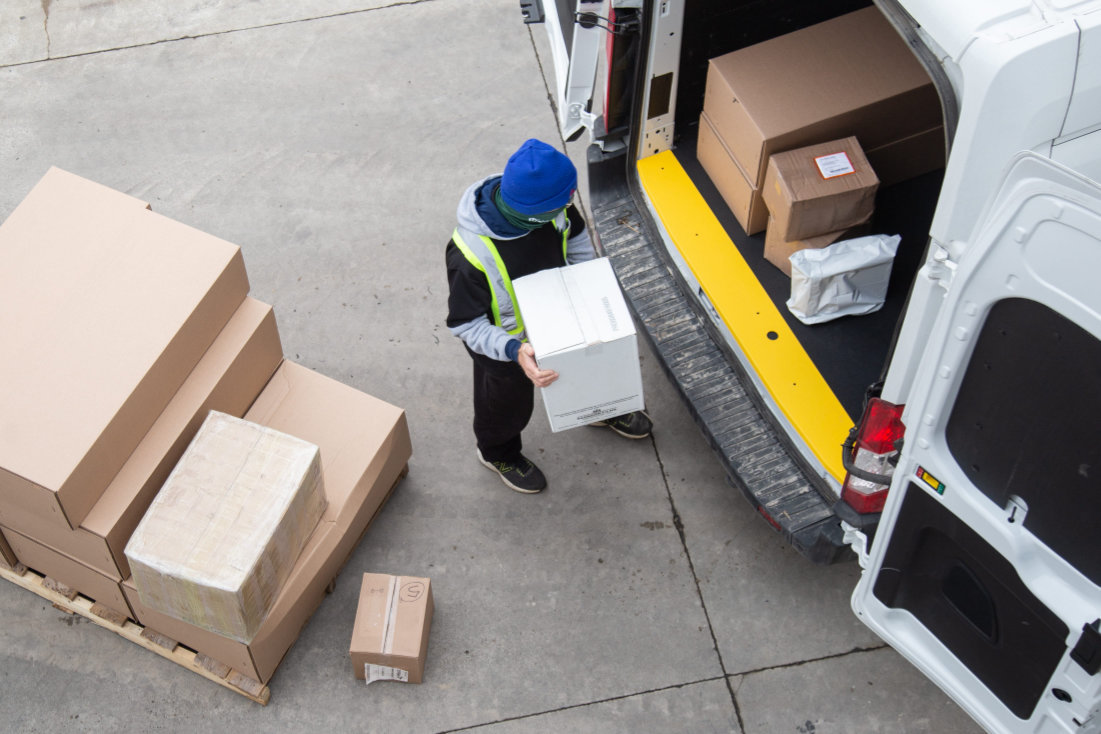
Effective thermal management enhances work van functionality by reducing equipment strain, minimizing climate-related downtime, and creating a more comfortable working environment. This boosts productivity, preserves van contents, and improves fuel efficiency by easing the load on the HVAC system, which is crucial in commercial operations where fuel costs significantly impact the bottom line.
SIGNS MY FLEET WILL ENCOUNTER A HEAT PROBLEM
So, we’ve established that heat mitigation is an important solution for work vans.
But is this relevant for your specific situation? Understanding the factors that contribute to extreme temperatures could help provide you with insight into whether your fleet is likely to experience heat problems.
KEY ISSUES LEADING TO UNCOMFORTABLE AND UNSAFE TEMPERATURE CONDITIONS:
Poor Quality or Missing Insulation: Insufficient insulation causes temperature extremes by allowing heat to penetrate in summer and escape in winter. High-quality insulation materials, like foam panels and reflective liners, are essential for maintaining a stable internal temperature.
.jpg)
Direct Sun Exposure: Sunlight heats the van's exterior, which radiates heat inward, dramatically raising internal temperatures. This is problematic for vehicles parked outdoors without shade or reflective covers.
.png)
Missing Ventilation: Inadequate ventilation leads to heat buildup due to poor air circulation. Proper systems, such as fans and vents, are necessary to remove hot air and bring in cooler air.
.png)
Heat-Generating Equipment: Engines, generators, and other tools inside the van generate heat. Without proper ventilation and strategic placement, these heat sources create localized hotspots and raise overall internal temperatures.
.jpg)
Frequent Door Openings: Regularly opening doors disrupts internal climate control, causing significant heat gain or loss, especially during extreme weather conditions. This is an unavoidable part of certain jobs, making thermal management even more important.
.jpg)
Large Windows or Heat-Susceptible Design: Vans with large windows allow more sunlight and heat to enter, worsening temperature extremes. Certain vans are also designed to absorb more heat (such as dark colored vehicles). Proper shading and reflective materials can mitigate these effects.
.jpg)
If even one or two of these apply to your fleet, you’re likely missing out on the many benefits of having a thermal barrier in your vans.
WHAT CAN I DO TO CREATE A THERMAL BARRIER IN MY VANS?
Effective climate control in work vans hinges on two primary factors: insulation and ventilation. These elements work together to maintain a stable and comfortable temperature inside the van, protecting both employees and equipment from extreme temperatures.
INSULATION: DON’T LET THE HEAT IN
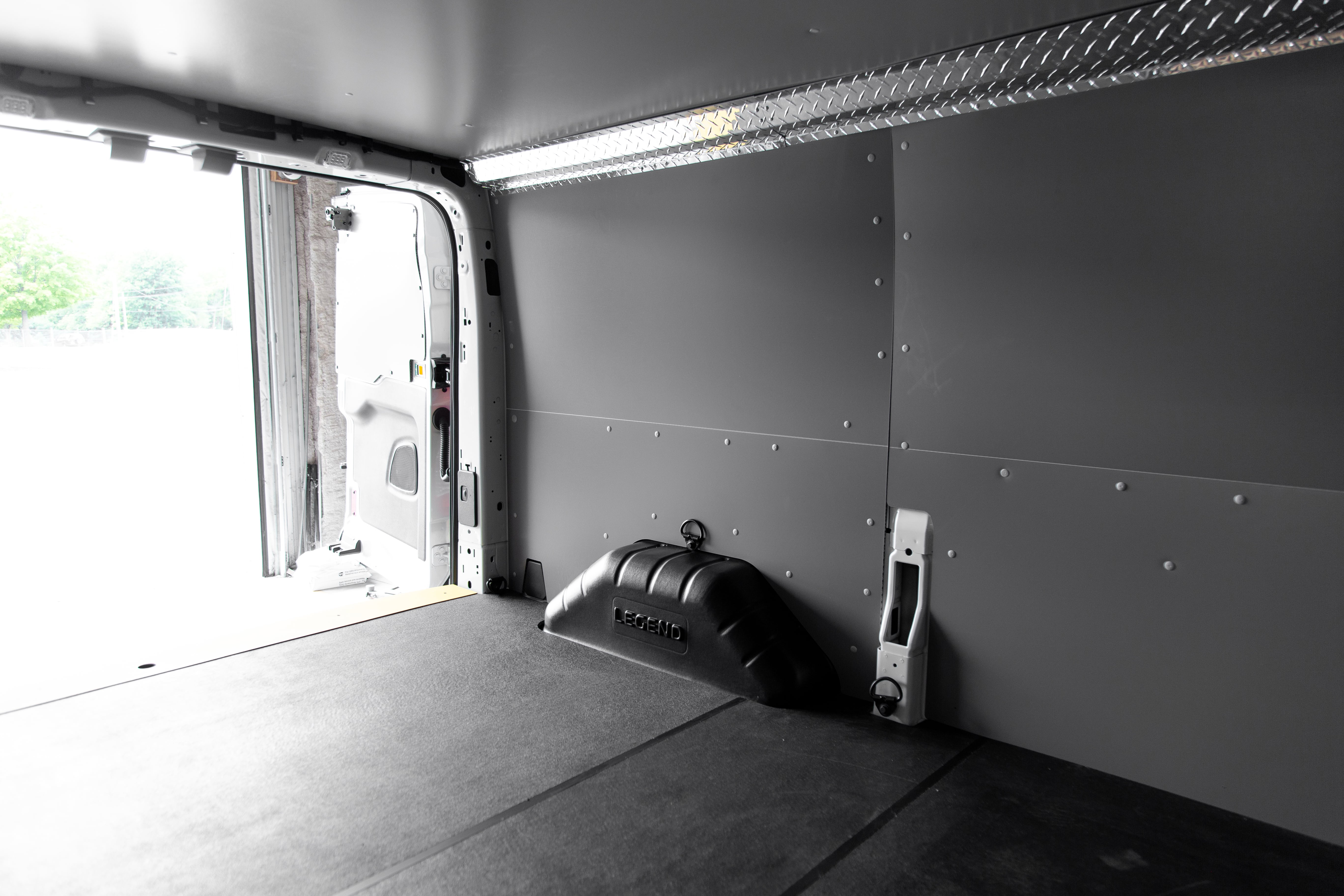
Insulation is the cornerstone of thermal management. It acts as a barrier that slows down the transfer of heat, keeping the interior of the van cool in the summer and warm in the winter.
Traditionally, vans come with stock liners, which are just single-layered sheets of coroplast that provide no insulation benefits.
When considering aftermarket insulation options, there are two factors to consider:
Foam Panels, which are easy to install with good thermal resistance
Reflective Insulation, which reflects radiant heat away from the van, reducing heat gain.
At Legend, we recognized the limitations of these options and sought to innovate beyond typical liners by combining their benefits and then adding more on top. We had to create something more advanced, something that could be undeniably effective in controlling the effects of heat.
This led us to create DuraTherm, featuring a unique honeycomb polypropylene material with added fiberglass and foiled foam for enhanced insulation and protection. This advanced composite material is designed to reflect the thermal load of the sun, effectively delaying the transfer of heat into or out of the van.
This 6mm thick liner acts as an armor plate for your van, creating a thermal barrier between the heat and your van’s interior.
By maintaining a consistent internal temperature, DuraTherm ensures year-round employee comfort and productivity. It protects tools and cargo from temperature fluctuations, extending their lifespan and reliability while reducing fuel consumption for enhanced energy efficiency. DuraTherm even provides effective soundproofing, creating a quieter workspace that supports focus and reduces stress.

These benefits not only improve operational efficiency but also increase the resale value of vehicles, making DuraTherm an essential choice for fleet managers seeking comprehensive insulation solutions.
VENTILATION: CYCLE AIR OUT
Proper ventilation is essential for maintaining air quality and preventing heat buildup inside the van. Without adequate ventilation, hot air becomes trapped, leading to uncomfortable and potentially hazardous conditions.
Standard setups often rely on basic air circulation mechanisms that may not adequately address the needs of modern operations. Traditional ventilation systems can struggle to maintain optimal air quality and comfort, particularly in environments where varying cargo conditions and external factors pose challenges.
.jpg)
Innovating beyond the industry standards, we created the VanFan. Legend's VanFan enhances air circulation, removing hot, stagnant air and cycling it out of the cargo area. This synergy with DuraTherm ensures a consistent, comfortable environment inside the van.
The VanFan’s ingenious Push-Pull design maximizes air intake and output, efficiently cycling air through the cargo area to prevent hot air pockets. The result is a cooler, more manageable working environment, even on the hottest days.
VanFan completes a full air cycle every 10 minutes, pushing out and replacing all air within the cargo area. This continuous circulation not only removes irritating odors, moisture, and gas vapors but also ensures a steady supply of fresh air for a more pleasant driving and working environment.
HOW WILL IT WORK FOR MY FLEET?
Every fleet is different. Every solution needs to be different.
We understand that. With years of industry-leading expertise, Legend offers the most effective heat management solutions available that can be tailored to each fleet’s unique needs.
Heat mitigation is a topic that can no longer be ignored. Dr. Ben Roberts of Loughborough University sums it up thus, “Overheating is simple – don’t let heat in in the first place and, if it does get in, make sure you can get it out again. It’s just a heat balance.”. Proactive measures are essential, particularly in work vans where traditional air conditioning systems are costly and complex to install.
To know what these proactive measures may look like for your fleet, check out Legend’s thermal management solution: DefendFleet.

Share Article
Related news
View all
How Van Upfitting Keeps Your Fleet Employees Safe & Happy
Van upfitting transforms your fleet into a safer & more efficient workplace by boosting employee morale, safeguarding well-being, reducing turnover, and driving productivity.

Riverford's New EV Fleet Needed A Custom Upfitting Solution
Discover how Riverford Organic Farmers transformed their delivery fleet with LEGEND Fleet Solutions. By transitioning to electric vehicles and implementing sustainable, custom upfitting solutions, Riverford not only enhanced operational efficiency but also reinforced their commitment to environmental responsibility, achieving remarkable results and significant ROI.
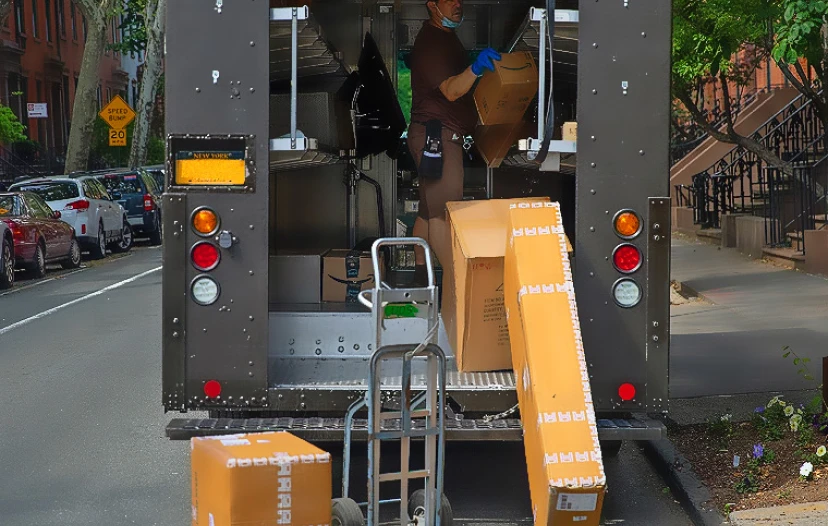
Sweat Threat - How to Improve Driver Comfort in the Heat
Learn what fleet operators need to know about heat mitigation.





